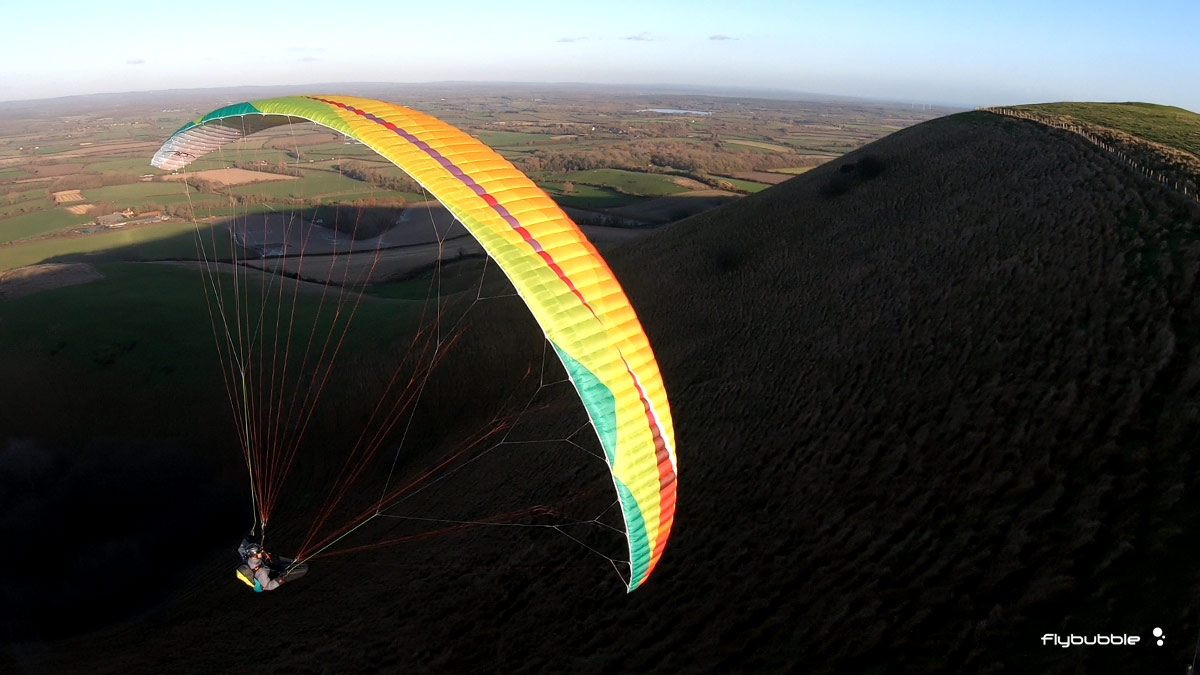
The CURE 2 from BGD (Bruce Goldsmith Designs) is a Sports Class wing (rated EN-C) that promises high performance with low stress. “It’s fast on glide with excellent stability in wind and turbulence,” says BGD. We tested it in the British winter and the South African summer to get a true picture of its character.
Construction
The fractal design is eye-catching and especially colourful when the sunshine filters through the panels. The canopy is well manufactured and it came in a strong, well-shaped backpack. The risers have magnetic keepers with a slip-in-clip system which are very effective at preventing the brakes from being knocked out of place, and are simple to disengage. Comfy handles, swivel pulleys, plastic inserts – all top-notch finishes. All the main lines are red, distinguished only by short sheaths near the maillons. I would have liked the stabilo line at least to be a clearly different colour.
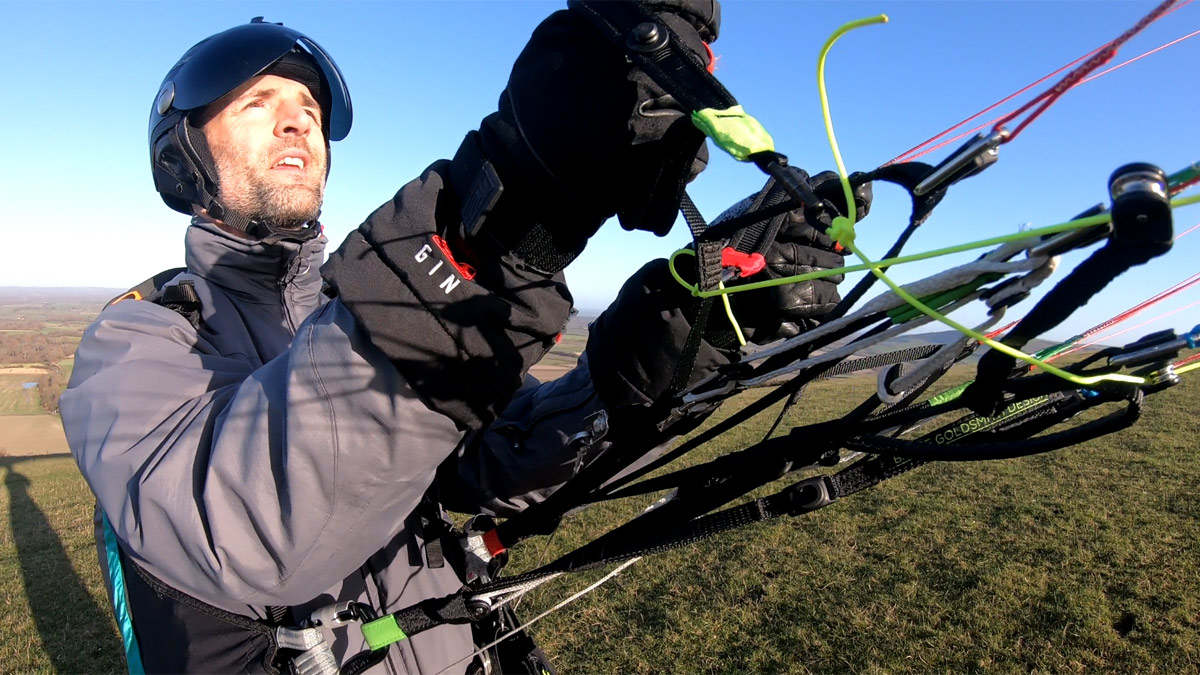
“With 74 cells it is the highest cell-count glider we have ever made,” says Bruce Goldsmith. “The internal structure also is very sophisticated with 9 diagonals in the chord on every cell.” This produces a cohesive aerofoil with a very clean appearance in the air.
It has a B-C bridge on the risers that assist with rear-riser control when accelerated. The gearing reduces the pressure and makes it simple.

Launching
Due to the narrow cell openings and many cells it takes a moment to fill and get going in light winds. On steep slopes I also noticed that the nose likes to flop over due to the shape of the reinforced nose section. Otherwise I found it simple and steady to launch. In strong wind it was easy to keep it down and it comes up in a slightly lazy steady arc that is perfect for stronger conditions. It does not have an aggressive nature and would present no difficulties to experienced pilots.
The CURE 2: In the air
The handling is great! The CURE 2 has light brake pressure that produces a soft and sweet turn. It’s mildly responsive at the beginning of the travel: you don't need a lot of brake for small responses so you can fly delicately in light conditions. In strong stuff you can put in a lot of brake if you want to as it doesn't have any kind of tendency to spin.
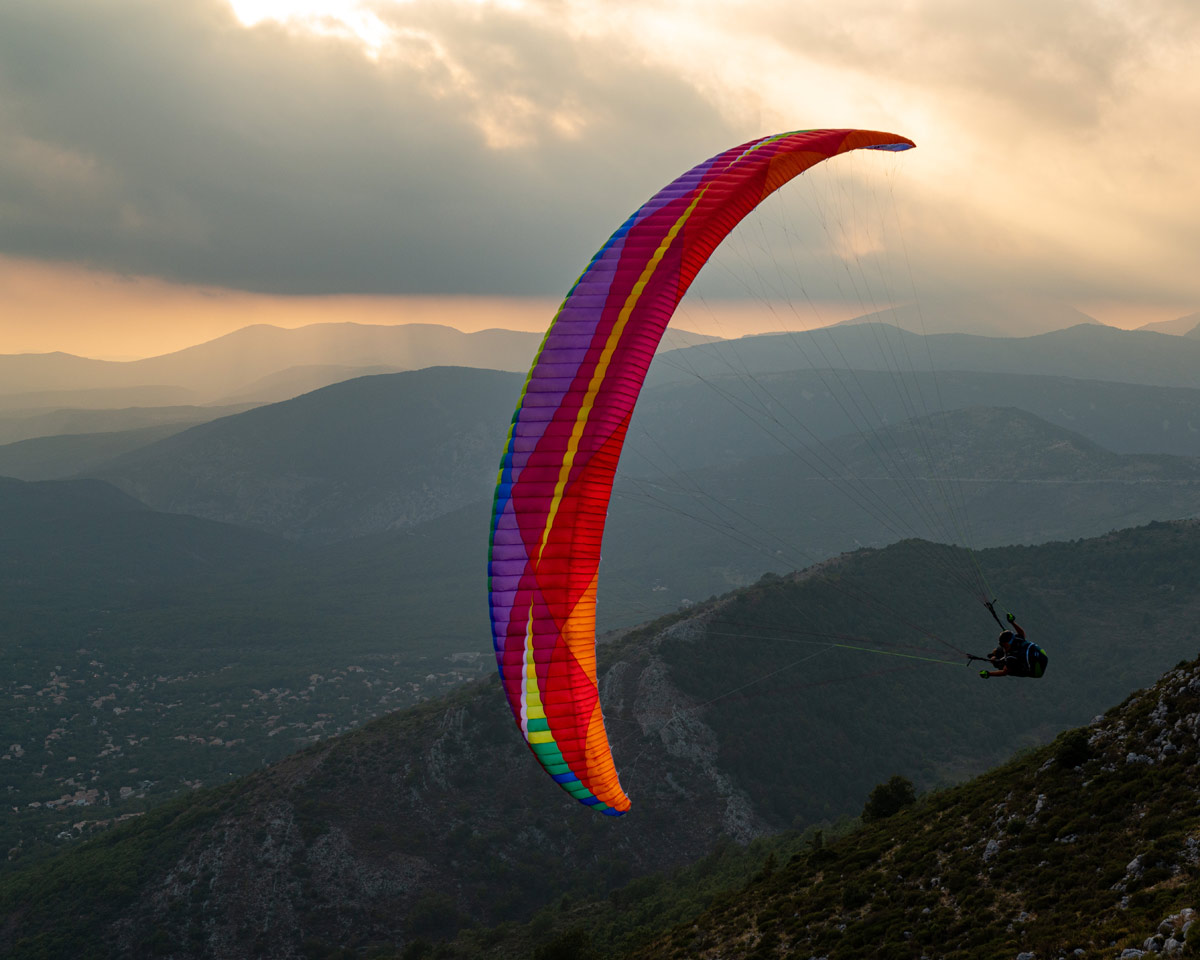
Agility
It is especially quick at changing direction from speed. If you're blasting along on bar and you hit a strike of lift you can immediately come off the bar and hook it around and it gives you a really nice responsive turn. It doesn't drop the wing a lot just enough to give you that freedom of movement. In big air, it is agile without needing to be held back.
Feeling
The way that it moves through the air is outstanding. The Cure 2 gives you that free flow feeling. It is a really nice flying wing that is only slightly reined back, which I think hits the sweet spot in the Sports Class.
It really comes alive when the thermals are strong and punchy, when conditions are full-on, or in the mountains. The wing is very calm and comforting, making it easy to fly in rough conditions as you won’t have to manage the glider much apart from catching the tips.
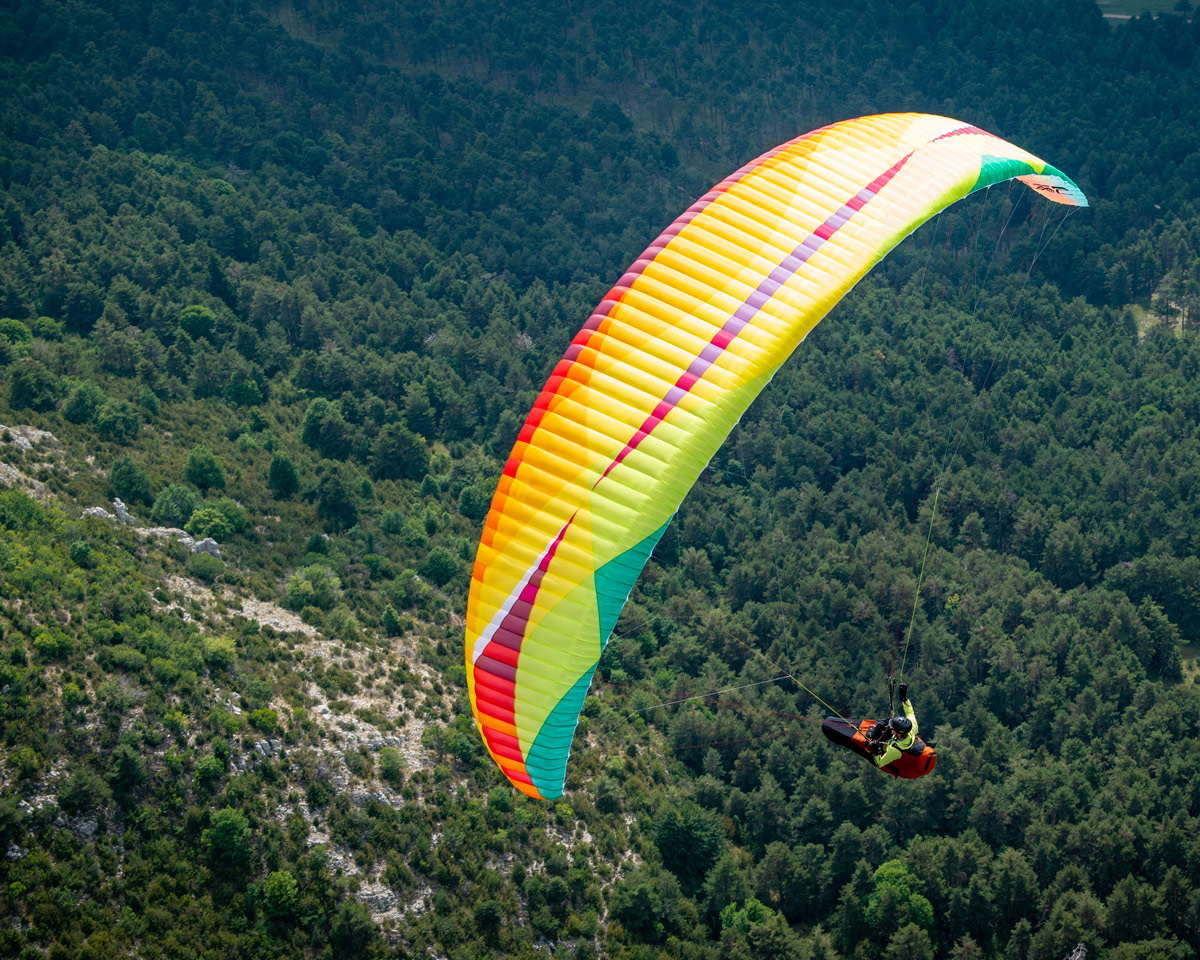
Safety
The active flying demands are quite low. It feels as if the wing sits just a little bit behind from vertical, it's just a little bit limited so it doesn’t jump ahead and you don’t have to catch dives and manage that energy. So it gives you a really chilled out, calm easy ride through active sky without being dull.
The wing has got some feedback but it is muted, very subtle. It definitely isn't a talkative glider with lots of information.
In terms of pilot demands during flying it is low to mid C, but overall maybe towards the top end in SIV situations where you've got quite a bit of energy to deal with. I had two asymmetric collapses during my mid-summer flying (pretty normal for conditions and class): they didn't bang out, they went in and I had to pump them out but it didn't disturb the glider much. The central section of the wing seems very solid.
I also spent a long time riding on speedbar, mostly half bar, sometimes full. It was easy to control (occasionally) on the rear risers and I did not feel that the wing was ‘on edge’.
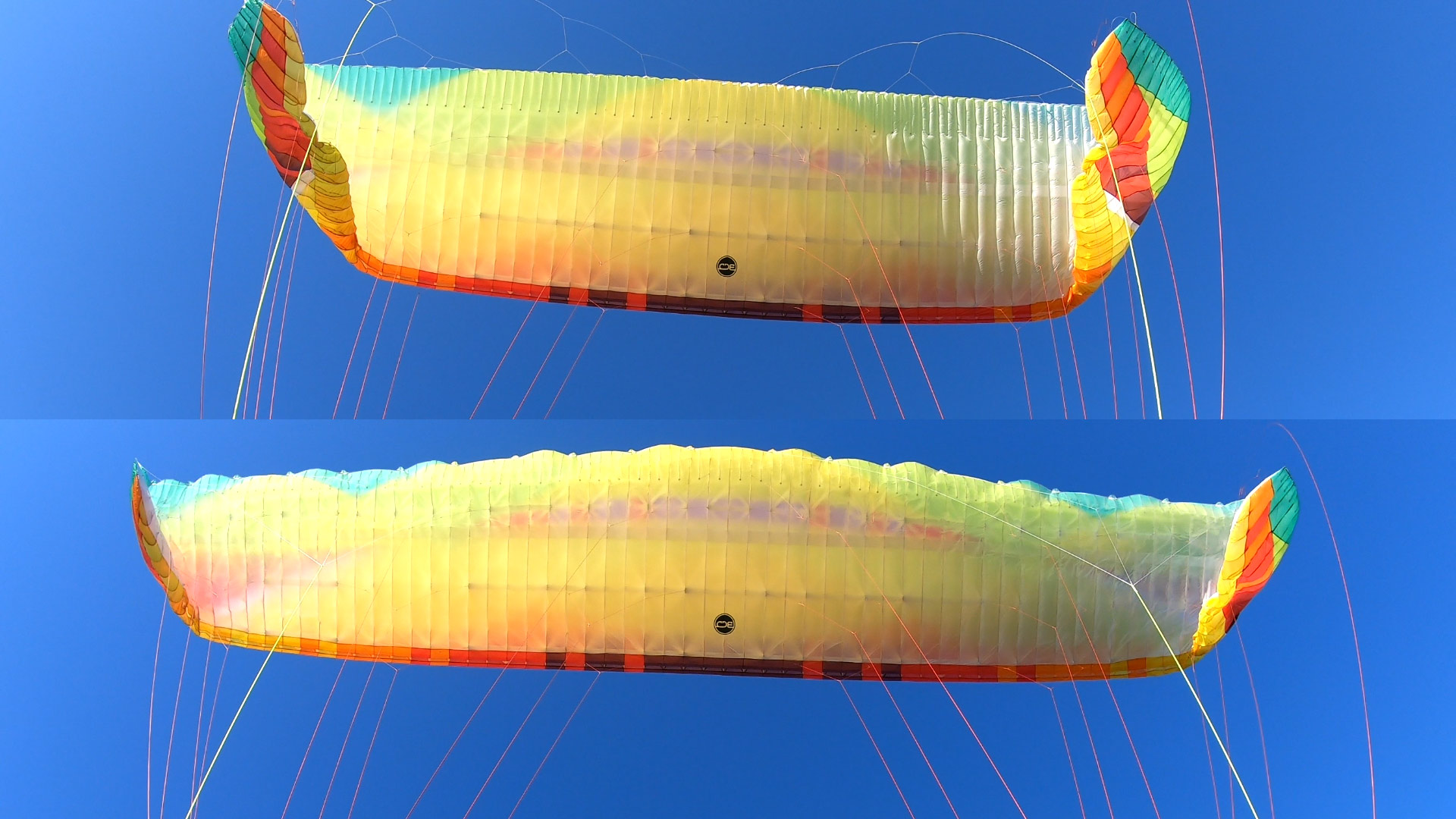
Big ears: Hooray! At last a high-performance wing with great emergency descent. Modern wings can sometimes thrash around on big ears or in some cases leave us calling them ‘pig ears’ in disgust. Big ears is very useful manoeuvre for staying on course, retaining airspeed and avoiding cloudbase and airspace, going to ground before a gust front, or for tricky toplanding approaches. Everyone knows how to do them, and when you need them things are usually demanding enough. The CURE 2 has nice big ears that deliver a big descent rate and are easy and stable. When released, they need a simple single pump to clear and they have no tendency to stick, cravatte or complicate your flying.
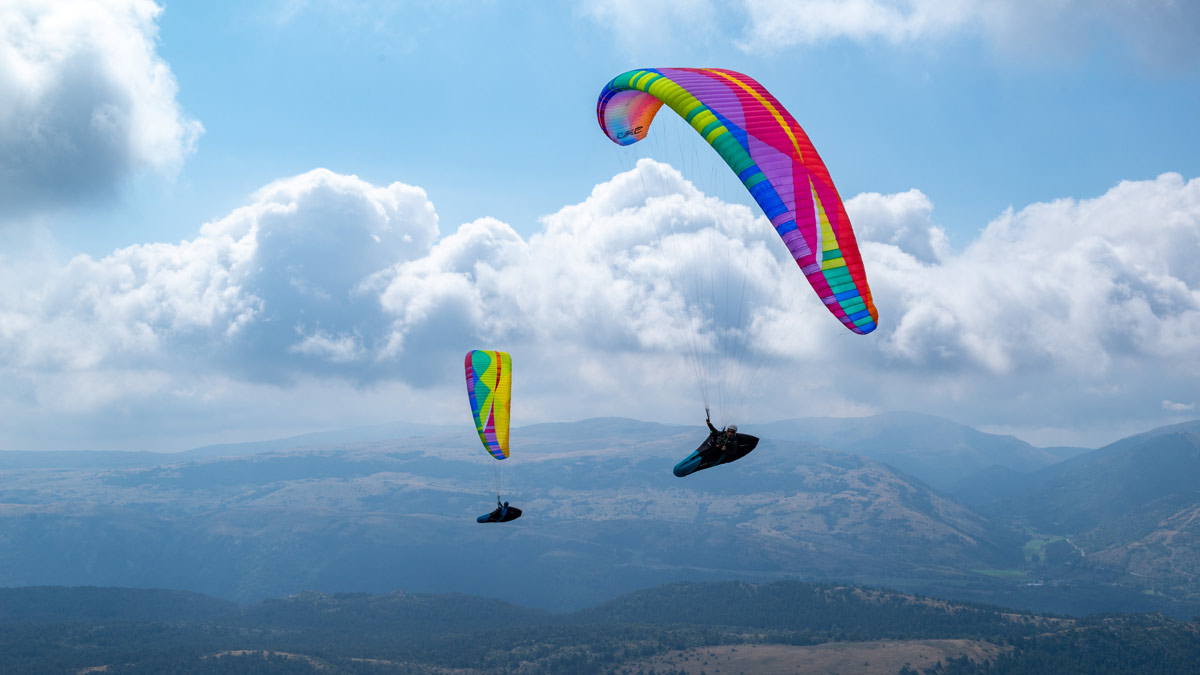
CURE 2 vs the rest: Performance
As we were unable to line up the right conditions for side-by-side comparisons, I asked Bruce Goldsmith about it. “We did some very good and precise performance tests. But yes its lots of effort. You need 2 matched pilots and 2 matched gliders and good conditions and then swap the pilots and gliders and repeat the tests. We saw that the Cure2 is the best performing EN C currently on the market.”
Based on my experience in South Africa this seemed to be true for XC – I made big transitions, could accelerate and make ground against headwinds. Our testing in weak winter UK conditions suggested that it doesn’t show an advantage in poor conditions that rely on flying at minimum sink (it's good, but not exceptionally floaty), sensitivity (it has muted feedback) and keeping the wing flat in corners (it prefers to roll a little) but as soon as there are thermals, the freedom of movement makes up for it. This suggests the wing is best matched with pilots wanting to fly XC and glide well at high speed, instead of scratching about on the home site.
Speed
Although it is technically possible to attain the claimed top speed of 60km/h with enough altitude, temperature and wing loading, I had trim speeds of 38km/h and a top speed of roughly 54 (with a load of 90kg on the 75-95 M wing, at 1000m in midsummer). This is typical for the better Sports Class wings, and not as fast as 2 liners, but it can certainly hold its own against everything in its class and even something like the Ozone M7.

Who is the CURE 2 for?
A pilot that is ready for the Sports Class: if you're not sure, stay on a ‘high B’ for another season. You should do an SIV course before going up to an EN-C. About 150-200 hours of thermic flying experience is good. You should have mastered the XC class and have got everything out of it that you can before looking for that next step: the ability to stay accelerated and still have good glide, a high trim speed, and a really wonderful flow feeling in the air. Now you’re ready for the CURE 2.
It's also suited to pilots that have become a bit overwhelmed with a high D 2 liner that needs a lot of active flying and active input and they just want to have fun again and chill out but still be able to search, glide, climb up, race. It'll give you all of that in a very comforting package so it's very nice for more experienced pilots wanting to downgrade. You won't feel limited on the CURE 2.
“Its high cell count and moderate aspect ratio work together to assure excellent performance for its class and great accessibility,” says BGD.
I could fly for hours in mid-summer conditions and I wasn't getting tired so it's a very good glider for long days, strong conditions, big climbs, big mountain flying. It holds itself together very well. It's got a nice tension in it, a resistance that allowed me to feel confident in sporty and rowdy air. It comes alive when the conditions are stronger and you get an advantage.
Find out more about the BGD Cure 2
BGD CURE 2: Video review
Join Greg in the hunt for a wild African thermal.
Reviewed by Greg Hamerton 01/01/2020
Flown at 90kg on the M (75-95) wing.
All images courtesy of BGD © Martin Lifka
Brought to you by Flybubble
Like what we do? The best way to thank and support us is to buy gear from us and recommend us to others. Review our service on Trustpilot and our products on Flybubble Shop. You can also subscribe to Flybubble Patreon. Thank you!

